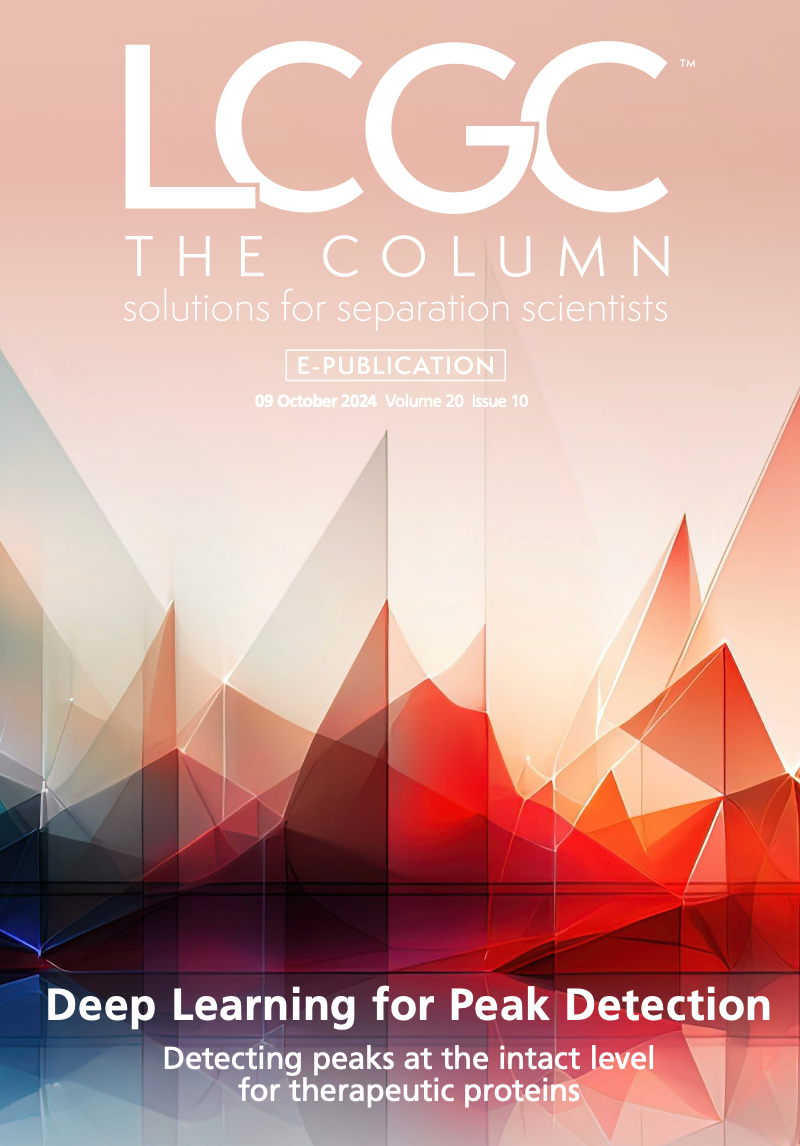Characterizing Cooked Cheese Flavor with Gas Chromatography
A joint study by the Department of Food and Nutritional Sciences at the University of Reading (United Kingdom) and Synergy Flavours (High Wycombe, UK) aimed to identify volatiles that contribute to the aroma of cooked cheese, including the role of fat content in their development during cooking. Volatiles and odorants in cooked mature cheddar were identified using a combination of solid-phase microextraction (SPME)/gas chromatography-olfactometry (GC-O) and SPME/gas chromatography-mass spectrometry (GC-MS). The resulting paper was published in the Journal of Food Science (1).
An important commodity for the food industry. cheese is a key ingredient in many cooked dishes, such as toppings to bread, pasta, and pizza, and in melted forms like fondue. The aroma of uncooked cheese has been studied extensively and has been described as a balance between the concentrations of a wide variety of volatile compounds (2-8). This “component balance theory” (9) states that the differences between cheese varieties can be attributed to the differences in the balance of the cheese odorants.
The study focused on cheddar cheese, with three mild cheddar cheeses with varying fat content (∼2%–35%) produced from the same milk to explore the role of fat content in flavor formation in cooked cheese. Additionally, commercially purchased mature cheddar and two different styles of cheese (mozzarella and parmesan) were investigated to represent a variety of different cheeses typically used in cooked dishes in the United Kingdom (1).
When compared to uncooked cheddar, cooked cheddar’s aroma is affected by additional compounds, including Strecker aldehydes, pyrazines, unsaturated aldehydes, 3-methyl-1,2-cyclopentanedione, and 4-hydroxy-2,5-dimethyl-3(2H)-furanone. In addition, esters such as ethyl butanoate and ethyl hexanoate, which have been widely reported as odorants in uncooked Cheddar, were not detected by either GC–O or GC–MS in cooked cheddar, despite being present in the uncooked samples. The combination of the additional odorants present in cooked cheddar and the loss of odorants from uncooked cheddar likely affects aroma differences between uncooked and cooked cheese. Furthermore, almost all the odorants were present at significantly different levels in one or more cooked cheeses than their uncooked counterparts, suggesting that cooking cheese also affects the balance of odorants, contributing to the flavor change (1).
Cheese type affected the formation of odorants during cooking; in many cases, the formation of aroma was lower in mozzarella than in the other cheeses, which may be related to the low aging time for mozzarella, as the aging processes such as proteolysis affect the concentration of Maillard reaction precursors. Fat content was also related to the concentration of odorants in cooked mild cheddar, suggesting that fat is involved in cheese flavor formation during cooking, both directly as a precursor and indirectly due to the role of fat in cheese structure and free fat. These results may have relevance for the dairy industry in creating better-performing low-fat cheeses for cooking. (1)
The authors state that their research can be used by the dairy industry to develop better cheeses, especially low- and reduced-fat cheeses, for use in cooked applications such as toppings for pizzas and ready meals. Alternatively, this research describes key volatile compounds in cooked cheese that can be used by the flavoring industry to develop authentic cooked cheese flavorings (1).
Ladle scooping melted cheese from pot in restaurant kitchen. © ylivdesign - stock.adobe.com

References
1. Sullivan, R. C.; Makinwa, F. Fagan, C. C.; Parker, J. K. Characterization of Cooked Cheese Flavor: Volatile Components. J. Food Sci. 2024. DOI: 10.1111/1750-3841.17357
2. Avsar, Y. K.; Karagul-Yuceer, Y. O. N. C. A.; Drake, M. A.; Singh, T. K.; Yoon, Y.; Cadwallader, K. R. Characterization of Nutty Flavor in Cheddar Cheese. J. Dairy Sci. 2004, 87 (7), 1999-2010. DOI: 10.3168/jds.S0022-0302(04)70017-X
3. Whetstine, M. C.; Drake, M. A.; Nelson, B. K.; Barbano, D. M. Flavor Profiles of Full-Fat and Reduced-Fat Cheese and Cheese Fat Made from Aged Cheddar with the Fat Removed Using a Novel Process. J. Dairy Sci. 2006, 89 (2), 505-517. DOI: 10.3168/jds.S0022-0302(06)72113-0
4. Christensen, K. R.; Reineccius, G. A. Aroma Extract Dilution Analysis of Aged Cheddar Cheese. J. Food Sci. 1995, 60 (2), 218-220. DOI: 10.1111/j.1365-2621.1995.tb05641.x
5. Drake, M. A.; Miracle, R. E.; McMahon, D. J. Impact of Fat Reduction on Flavor and Flavor Chemistry of Cheddar Cheeses. J. Dairy Sci. 2010, 93 (11), 5069-5081. DOI: 10.3168/jds.2010-3346
6. Frank, D. C.; Owen, C. M.; Patterson, J. Solid Phase Microextraction (SPME) Combined with Gas-Chromatography and Olfactometry-Mass Spectrometry for Characterization of Cheese Aroma Compounds. LWT-Food Sci. and Technol. 2004, 37 (2), 139-154. DOI: 10.1016/S0023-6438(03)00144-0
7. Suriyaphan, O.; Drake, M.; Chen, X. Q.; Cadwallader, K. R. Characteristic Aroma Components of British Farmhouse Cheddar Cheese. J. Agricultural Food Chem. 2001, 49 (3), 1382-1387. DOI: 10.1021/jf001121l
8.Zehentbauer, G.; Reineccius, G. A. Determination of Key Aroma Components of Cheddar Cheese Using Dynamic Headspace Dilution Assay. Flavour and Fragrance Journal 2002, 17 (4), 300-305. DOI: 10.1002/ffj.1102
9. Papademas, P.; Bintsis, T., Eds. Global Cheesemaking Technology: Cheese Quality and Characteristics; John Wiley & Sons, 2017.

University of Rouen-Normandy Scientists Explore Eco-Friendly Sampling Approach for GC-HRMS
April 17th 2025Root exudates—substances secreted by living plant roots—are challenging to sample, as they are typically extracted using artificial devices and can vary widely in both quantity and composition across plant species.
Sorbonne Researchers Develop Miniaturized GC Detector for VOC Analysis
April 16th 2025A team of scientists from the Paris university developed and optimized MAVERIC, a miniaturized and autonomous gas chromatography (GC) system coupled to a nano-gravimetric detector (NGD) based on a NEMS (nano-electromechanical-system) resonator.












